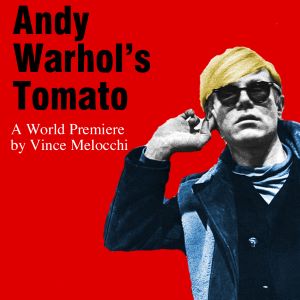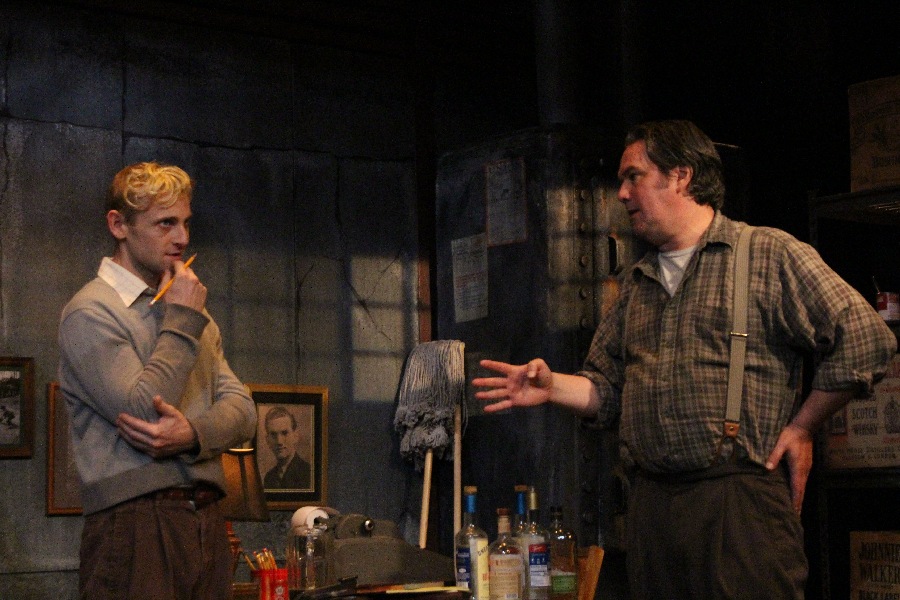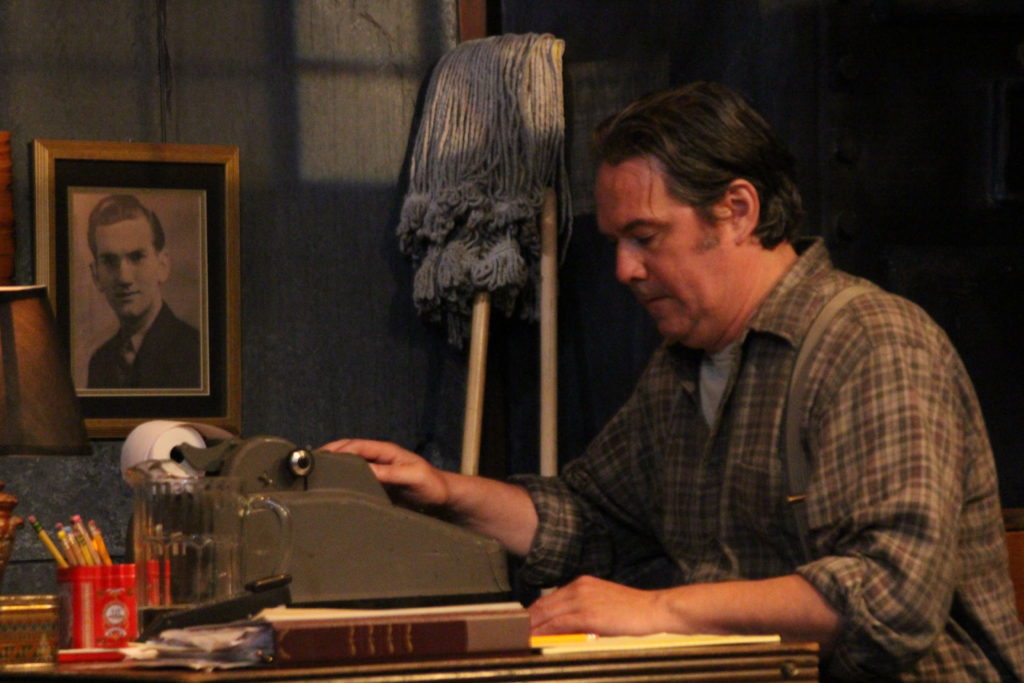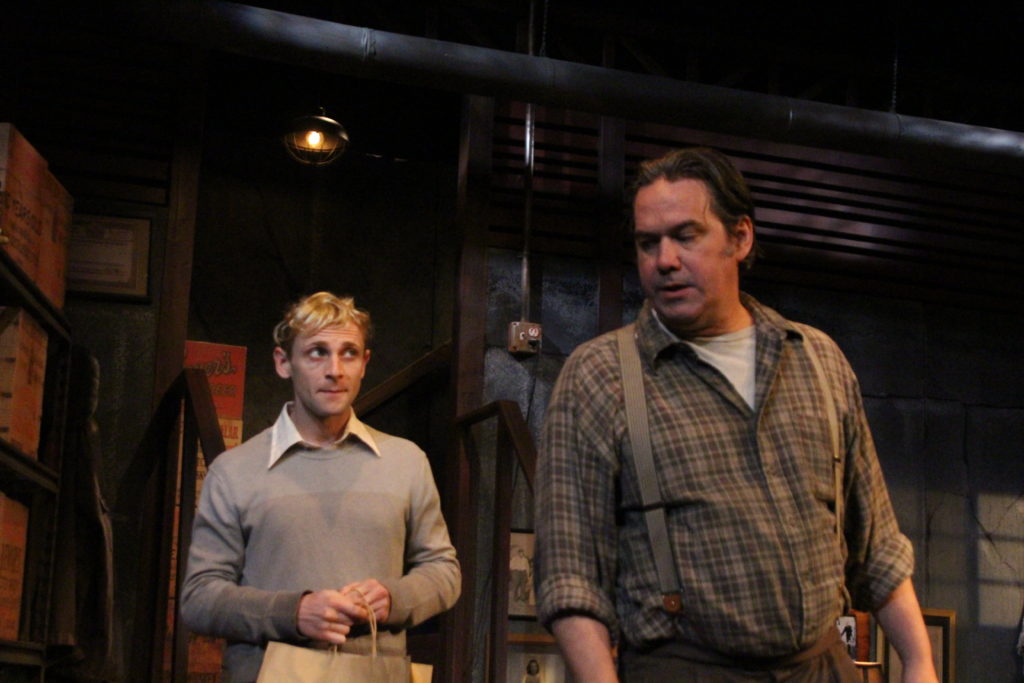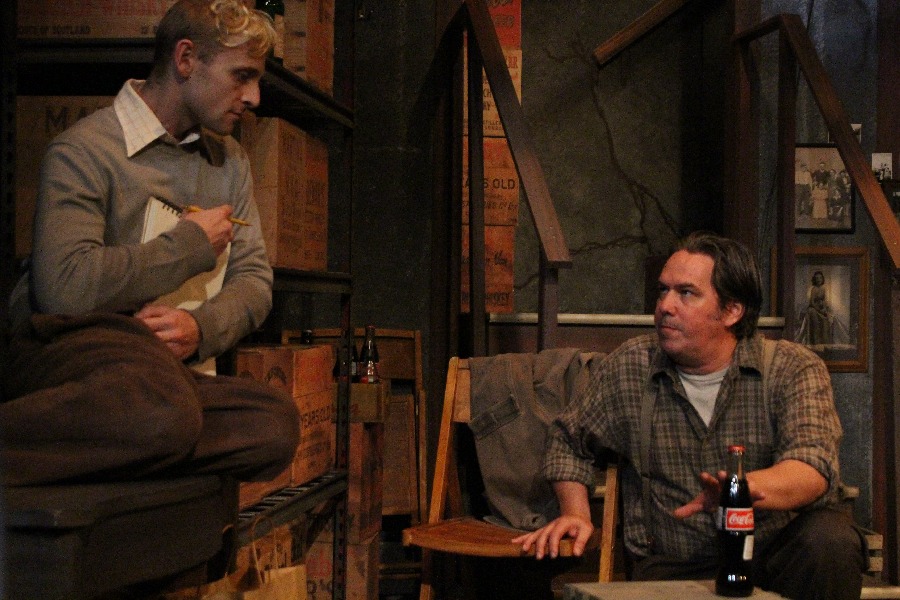PEELING A TOMATO
If you’ve ever wondered what Andy Warhol was like as a kid, perhaps writer Vince Melocchi’s new play will give you a better understanding of the iconic artist, far beyond his eccentric persona.
This curiosity became the biggest challenge for the playwright, finding the voice of a teenage Andy Warhola who was living in poverty with his immigrant family in Pittsburgh.
Most people know Andy as the guy who painted the soup can. He became a leader in the pop art movement, exploring the connection between celebrity and artistic expression. He moved to New York and dropped the “a” from his last name, after an article in Glamour Magazine mistakenly omitted it. He became one of the most significant figures of his time. But, what about his life before fame?
Vince Melocchi, celebrated for his plays about the working class (Lions and Julia), grew up in Pittsburgh. He had heard all the stories about Warhol and wanted to research the early life of the artist. The story takes place in 1946 Pittsburgh. An 18-year-old Andy Warhol finds himself in the basement of a working class bar. Over the course of a summer, Andy gives and gets inspiration, guidance, and friendship from a surprising source.
Directed by the multi-award winner Dana Jackson, Andy Warhol’s Tomato — a story that is both truth and fiction — will open Pacific Resident Theatre’s 34th season (2019/20). Mr. Melocchi spoke to Stage and Cinema about his inspiration to explore the Andy Warhols’ roots.
Stage and Cinema: Vince, did you get a chance to see the Warhol Revisited exhibition? If not, what exhibitions have impressed or stuck with you the most?
Vince Melocchi: No, I did not. But I have, on a couple of occasions in the past few years, gone to the Warhol Museum in Pittsburgh. I was able to get a lot of really good material from that. The most interesting part of the museum, for me, was on the top two floors. There are seven floors. It was there that I saw all the bits and pieces of Andy’s youth. His movie star scrapbooks, pictures of his family, his sketchbook’¦which is featured prominently in the play. With each floor I saw the progression of his body of work. They even had his “time capsules.” He collected over 600 boxes through the years of his life. Simple cardboard boxes filled with objects, and sealed. One of them had sourdough starter inside of it.
What really stuck with me, and still does to this day, is the beauty of his work in the sketchbook. It captures the spirit of the time. Most of the sketches were done on his brothers produce route. I got a really good feel of those neighborhood customers. It’s uniquely stunning because the sketches are a nice mix between art and animation. I’ve always loved animation; especially in the style that Warhol did his sketches. It kind of reminded me of Will Eisner’s “The Spirit,” pulp fiction drawings. And you know, I also loved the Marilyn and Jackie Kennedy Onassis work. There is something so hauntingly lovely and sad about them.
S&C: Were you a Warhol fanatic before becoming interested in writing this play?
VM: I didn’t know much about Andy Warhol except for the stories I’d heard. More of them were false than true. But they are great stories. One tale was about Andy living across the street from my cousins on Steele Street. Then there was the story I’d heard often, about how he’d draw on napkins, up at the Huddle Bar on Grandview Avenue, in exchange for Coca-Cola. And how the owner then stored them all in the basement of the bar. None of this is true, but once I heard those stories I never saw the Huddle Bar in the same way again. I really fell in love with his work over these past couple years of researching him.
The more I got to know about Andy, the more I realized that he was a true Pittsburgher. That may sound strange, because most people think of Andy as this eccentric artist. This guy had a lot of guts and drive. He was not going to be denied by anyone. That’s a mentality you have drilled into you while growing up there, especially when you’re poor as hell. He worked hard to get where he was and wouldn’t take “no” for an answer. That’s a working class mentality. Maybe his tool was a brush and not a shovel, but make no mistake that he was a worker.
S&C: Was this always conceived as a two-person play like RED? Does this compare to RED in any way?
Andy Warhol’s Tomato was originally a seven-character play about a woman having her bar foreclosed on. The only collateral she had was a stained, faded, unauthenticated Andy Warhol painting on the basement wall. AWT was inspired by yet another story I had heard about another bar. Feedback from the play reading helped me understand that people just weren’t interested in anything but Warhol and the bartender, Bones. So I made adjustments. Rearranging the furniture of my play as Annie Baker would say. The next draft had just five characters. I got the same feedback. The audience only cared about Andy and Bones. The third draft was 4 characters. Still, they only cared about Andy and Bones. What’s more, I had to admit to myself that as wonderful as my actors were, I only cared about the characters of Andy and Bones. That was the story, the relationship between two men. Each one is helping the other one in their own way. The other stuff was a device, and frankly, a distraction from the story of our two main characters.
The two men in the play Red are obviously different from Bones and Andy. But I can see where people might draw parallels. Both plays are about artists, both two handers and all that, but in my eyes AWT is more a father and son piece than anything else. Andy and Bones really come to love one another as people and as artists. I do hope people walk away from Andy Warhol’s Tomato looking at not only Andy in a different light, but also all artists from all walks of life.
production photos by Teak Piegdon-Brainin
Andy Warhol’s Tomato
Pacific Resident Theatre, 703 Venice Blvd in Venice, CA
Thurs-Sat at 8; Sun at 3
August 10-September 22, 2019 EXTENDED to November 24, 2019
for tickets, call 310 822.8392 or visit PRT
